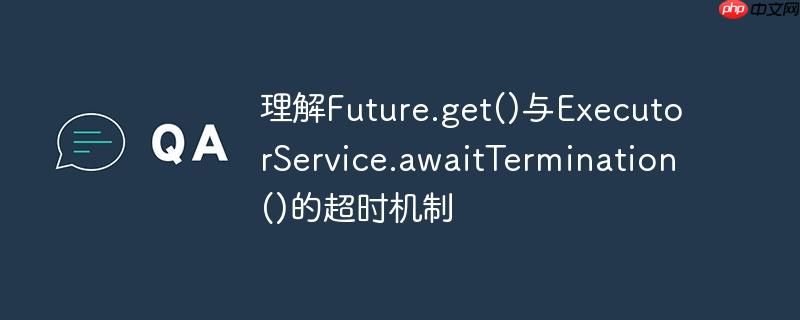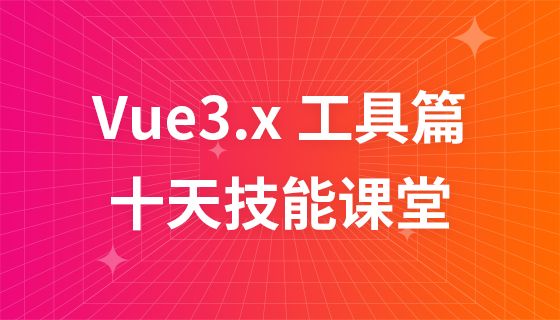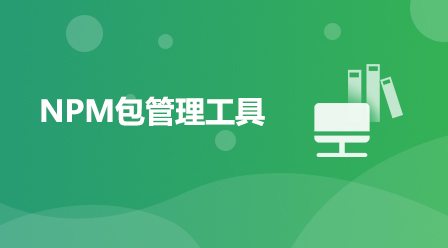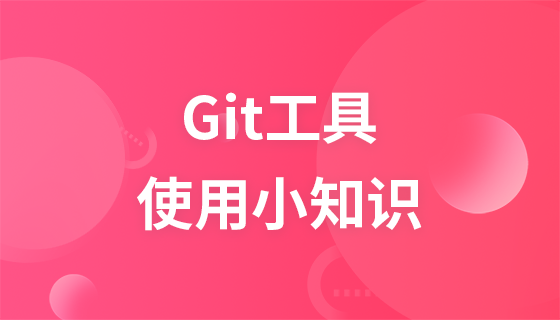
在Java并发编程中,ExecutorService是管理线程池的核心接口,它允许我们提交任务(Callable或Runnable)并异步执行。Future接口则代表了异步计算的结果,它提供了检查计算是否完成、等待计算完成以及获取计算结果的方法。
当向ExecutorService提交一个Callable任务时,会返回一个Future对象。通过这个Future对象,我们可以使用get()方法来获取任务的执行结果。get()方法有阻塞版本和带超时参数的版本。带超时参数的get(long timeout, TimeUnit unit)方法会在指定时间内等待任务完成并返回结果,如果超时仍未完成,则抛出TimeoutException。
ExecutorService的生命周期管理通常涉及shutdown()和awaitTermination()方法。shutdown()方法用于启动线程池的优雅关闭过程,它会拒绝新的任务,但允许已提交的任务继续执行。awaitTermination(long timeout, TimeUnit unit)方法则会阻塞当前线程,直到所有任务完成、超时时间到达或当前线程被中断。
考虑以下代码片段,它展示了Future.get()和ExecutorService.awaitTermination()的组合使用:
import java.util.ArrayList;
import java.util.List;
import java.util.concurrent.*;
public class ExecutorServiceTimeoutDemo {
// 假设这是一个模拟长时间运行的Callable任务
static class MyCallable implements Callable<String> {
private final String name;
private final long sleepMillis;
public MyCallable(String name, long sleepMillis) {
this.name = name;
this.sleepMillis = sleepMillis;
}
@Override
public String call() throws Exception {
System.out.println(name + " started.");
Thread.sleep(sleepMillis); // 模拟任务执行时间
System.out.println(name + " finished.");
return "Result of " + name;
}
}
public static void main(String[] args) {
// 创建一个固定大小为2的线程池
ExecutorService executorService = Executors.newFixedThreadPool(2);
List<Callable<String>> callables = new ArrayList<>();
// 假设 task1 耗时 4 分钟
callables.add(new MyCallable("Task1", 4 * 60 * 1000));
// 假设 task2 耗时 6 分钟
callables.add(new MyCallable("Task2", 6 * 60 * 1000));
List<Future<String>> futures = null;
try {
// 提交所有任务,invokeAll会返回Future列表
futures = executorService.invokeAll(callables);
System.out.println("Attempting to get results with 5-minute timeout for each task...");
// 获取第一个任务的结果,设置5分钟超时
// 假设Task1实际耗时4分钟,这里会等待4分钟
String result1 = futures.get(0).get(5, TimeUnit.MINUTES);
System.out.println("Got " + result1);
// 获取第二个任务的结果,设置5分钟超时
// 假设Task2实际耗时6分钟,这里会等待5分钟后抛出TimeoutException
String result2 = futures.get(1).get(5, TimeUnit.MINUTES);
System.out.println("Got " + result2);
} catch (InterruptedException e) {
System.err.println("Execution interrupted: " + e.getMessage());
Thread.currentThread().interrupt(); // Restore interrupt status
} catch (ExecutionException e) {
System.err.println("Task execution failed: " + e.getCause().getMessage());
} catch (TimeoutException e) {
System.err.println("Task timed out: " + e.getMessage());
// 超时后,任务可能仍在运行
} finally {
// 关闭ExecutorService
executorService.shutdown();
System.out.println("ExecutorService shutdown initiated.");
// 等待ExecutorService终止,设置30秒超时
try {
if (!executorService.awaitTermination(30, TimeUnit.SECONDS)) {
System.err.println("ExecutorService did not terminate gracefully within 30 seconds. Forcing shutdown...");
executorService.shutdownNow(); // 强制关闭
} else {
System.out.println("ExecutorService terminated gracefully.");
}
} catch (InterruptedException e) {
System.err.println("Await termination interrupted: " + e.getMessage());
Thread.currentThread().interrupt();
executorService.shutdownNow();
}
}
}
}代码执行流程与超时计算:
executorService.invokeAll(callables);: 这一步将两个Callable任务提交到线程池。invokeAll方法会阻塞直到所有任务完成,或者被中断,或者某个任务抛出异常。它返回一个List<Future<T>>,每个Future对应一个提交的任务。
futures.get(0).get(5, TimeUnit.MINUTES);:
futures.get(1).get(5, TimeUnit.MINUTES);:
executorService.shutdown();:
executorService.awaitTermination(30, TimeUnit.SECONDS);:
总的等待时间计算:
由于Future.get()的调用是顺序执行的,并且awaitTermination()是在所有get()调用之后才开始等待,因此它们的超时时间是累加的。
因此,在最坏的情况下(即每个get()都达到其最大超时,且awaitTermination也需要等待其最大时间),总的等待时间将是:5分钟 + 5分钟 + 30秒 = 10分钟30秒。
问题的关键在于,Future.get()的超时是针对单个任务的完成,并且是顺序阻塞的。而awaitTermination()的超时是针对整个线程池中所有未完成任务的终止,它发生在get()调用之后。较短的30秒awaitTermination超时不会“覆盖”Future.get()的5分钟超时,因为它们作用于不同的阶段和对象。
Future.get()和ExecutorService.awaitTermination()是Java并发编程中用于管理任务结果和线程池生命周期的重要工具。理解它们各自的作用范围、执行顺序以及超时机制是避免程序意外长时间阻塞的关键。当它们顺序使用时,它们的超时时间是累加的,而不是简单地取最短值。正确地处理这些超时和异常,以及合理地设计线程池的关闭逻辑,能够确保并发程序的健壮性和可控性。
以上就是理解Future.get()与ExecutorService.awaitTermination()的超时机制的详细内容,更多请关注php中文网其它相关文章!

每个人都需要一台速度更快、更稳定的 PC。随着时间的推移,垃圾文件、旧注册表数据和不必要的后台进程会占用资源并降低性能。幸运的是,许多工具可以让 Windows 保持平稳运行。




Copyright 2014-2025 https://www.php.cn/ All Rights Reserved | php.cn | 湘ICP备2023035733号